Turn Back Time in Vermilionville Historic Village
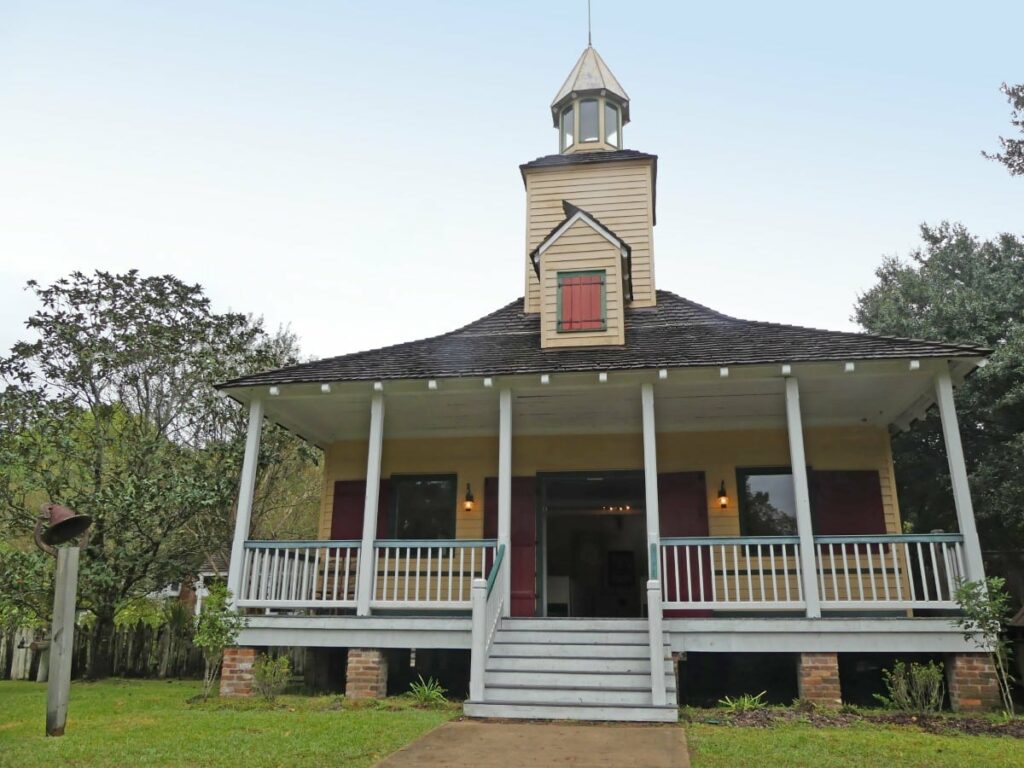
Originally named Vermilionville, today Lafayette, Louisiana is home to a living history museum that takes you back to a recreated Acadian village. Acadian culture began with Le Grand Derangement in the 1750s and ‘60s. At that time during the French and Indian War, the British drove thousands of French Canadians out of their home. Because they were Catholic and refused to sign loyalty oaths to England, the British didn’t trust them. They captured the Acadians, loaded them in ships, and deported them. The folks in Catholic Spanish-owned Louisiana welcomed them. The name “Acadians” gradually evolved into “Cajun” as they refer to themselves today.
Acadian Culture at Vermilionville Historic Village
Vermilionville Historic Village is one of the world’s largest physical representations of an early Acadian settlement. The village features seven original structures and many accurate reconstructions on 23 acres on Bayou Vermilion. Vermilionville’s gift shop, La Boutique, transports you back in time to Louisiana from 1765 through 1890.
Authentic docents in Vermilionville are descendants of the Acadians or Native Americans and African Creoles who were here when the first Acadians arrived and helped form that culture. In Louisiana, the word “Creole” refers to any person of European or African descent whose ancestors were born there before the Louisiana Purchase in 1803 when Louisiana became a United States territory.
Culture comes to life in the village buildings. Each structure displays signs in English and French sharing the date the home was built and the names of the family that lived in it. Inside, artifacts provide a peek into the Cajun history and lifestyle.
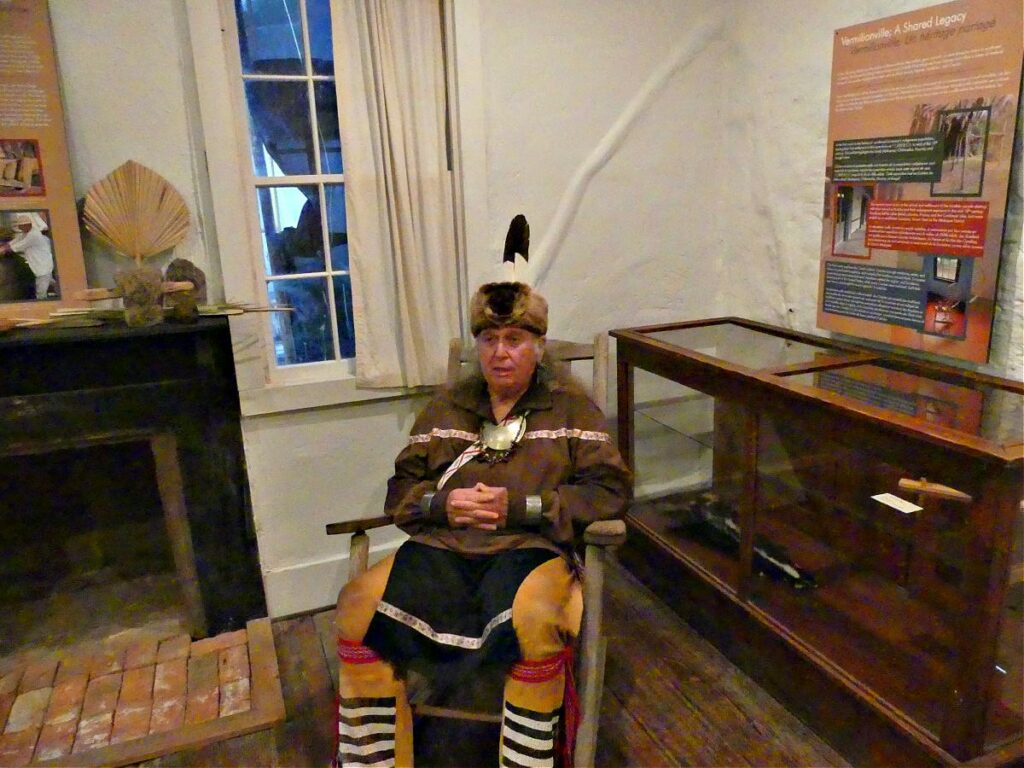
The House of Cultures, La Masion Coussan
La Masion Coussan, House of Cultures, was built around 1850 by the Coussan family in the typical style of Cajun and Creole homes of that time. It is built of cypress and insulated inside the walls with bousillage, a mix of Spanish moss and mud. Inside, I met Chief John Sitting-Bear Mayeux, a former chief of the Avogel tribe, one of Louisiana’s oldest tribes. He shared stories of his native people who were here for almost 5,000 years when the Cajuns arrived. His tribe was not always treated fairly by the first white invaders, but the Avogels welcomed the new Cajuns and taught them many things about hot and humid Louisiana swamplands including using the moss to create the bousillage insulation.
Another special treat in this house was meeting Lynn Gery who makes quilts in the same way they were made a century ago – a skill learned from her grandmother at age six.
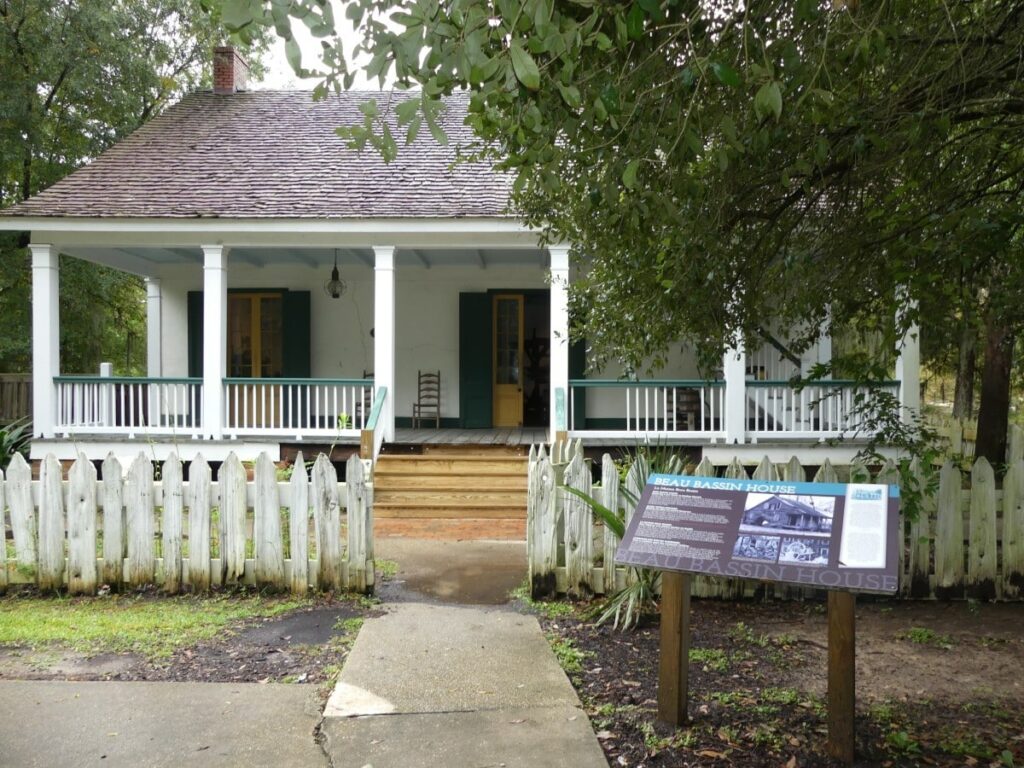
Exploring Textile Arts at Beau Bassin
At the Beau Bassin house the focus centers on the textile arts. There we met Brenda LaLonde, a fourth-generation Cajun seamstress, who showed us the art of making cotton thread on a spinning wheel. Built around 1840, the house showcases a combination of Cajun, Creole, and American architecture. Six pillars support the porch reminiscent of Greek revival design popular among many Southern homeowners. Bousillage insulates the walls and a narrow stairway leads from the porch to the attic rooms. These rooms were commonly used as a garçonnière, a separate dwelling for the young men in Creole families. The porch on Cajun homes, called La galerie, served as an extra room for gatherings on sunny days.
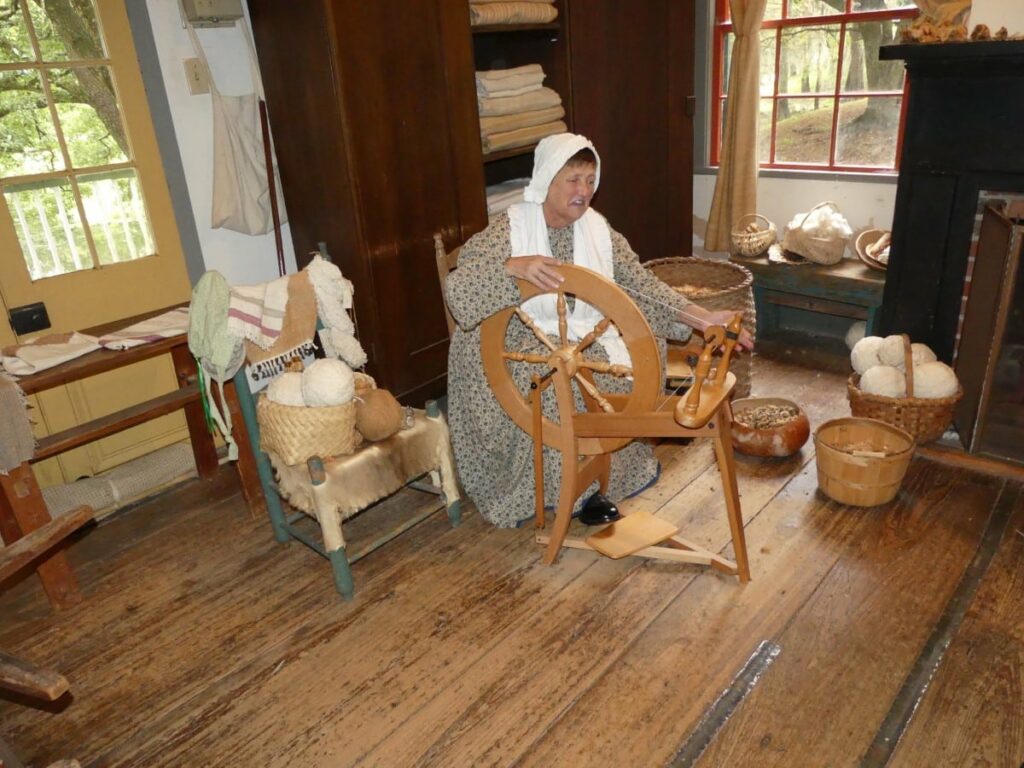
Woodworking at La Maison Mouton
La Maison Mouton – where the focus is on tools – features demonstrations of woodworking. Cliff Mire was working there when I visited. A self-taught wood carver and was carving ducks from his favorite wood, cypress collected from the Atchafalaya Basin. The Mouton house is a reconstruction of a typical 1810 Cajun house with a detached kitchen. Like many houses of that era, it has a projecting comb ridge on its steep shingled roof. This was used before metal flashing to deflect water away and protect the exposed ends of the wood shingles at the roof’s peak. Chimneys had wood protruding like a ladder to make climbing to the roof easy.
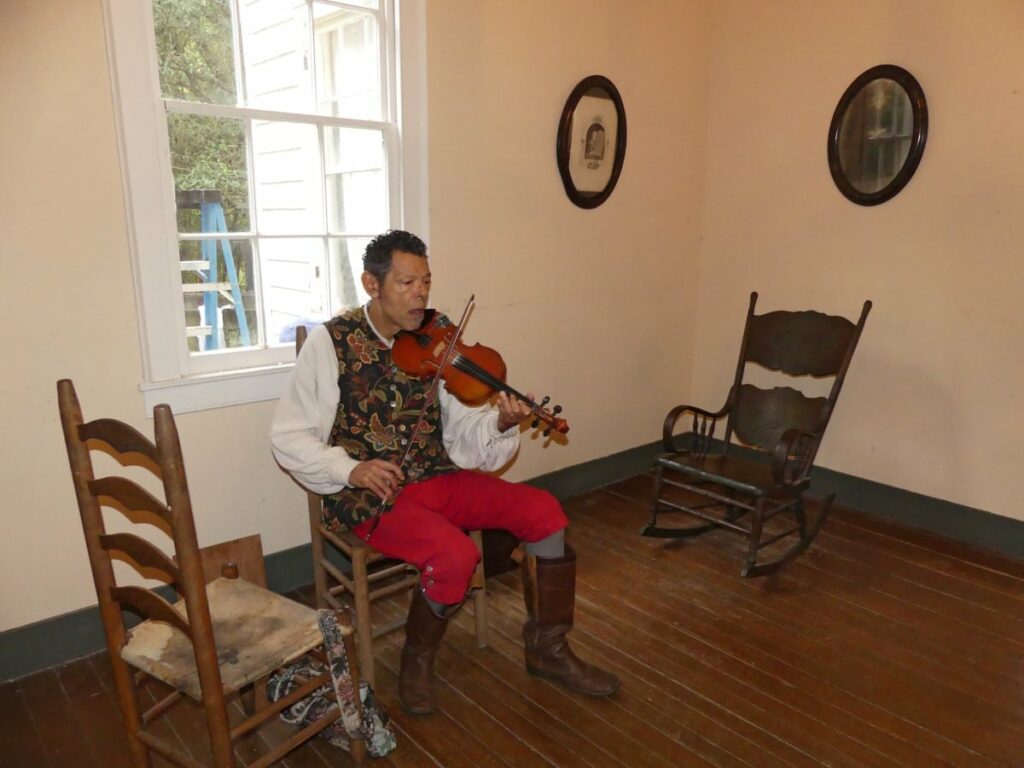
A Touch of Music at Maison Boucvalt
Maison Boucvalt, Vermilionville’s youngest home, is from the late 1800s. It’s a mix of Creole architecture with Victorian. Its adjoining rooms with no central hallway are a Creole characteristic. Victorian features include decorative balusters and elaborate column capitals. Furnishings showcase the style of a well-to-do urban family. Here we met D’jalma Garnier, the grandson of famous New Orleans jazz bandleader and fiddler, Papa Garnier. He played his Creole fiddle for us and explained the difference between Cajun and Zydeco music.
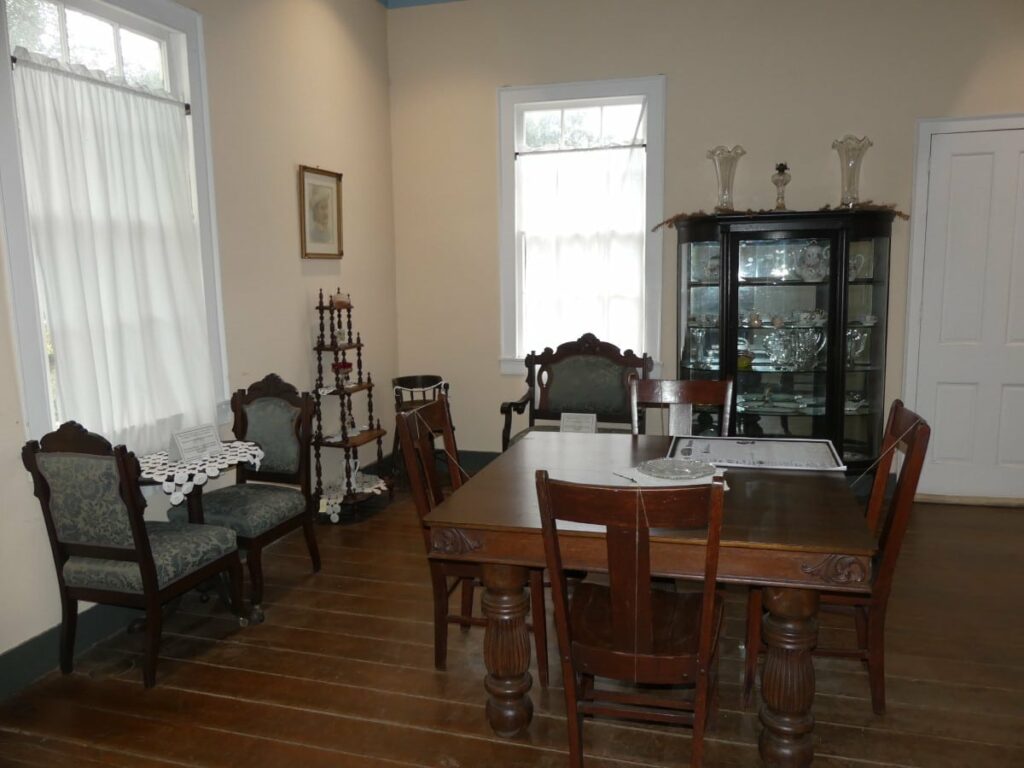
Homes for a Rancher and a Priest
Armand Broussard House is the largest and oldest house dating to around 1790. It boasts the furnishings as a wealthy Acadian rancher’s home during French Colonial Louisiana.
La Grange Family House, built in 1830 includes attic rooms furnished as a priest’s living quarters or Le Presbytére. Since Catholicism was the only legal religion in Louisiana then, and Cajuns were very religious, Presbytéres were typically found on a family farm.
Several other buildings represent life in Acadiana. La Chapelle Des Attakapas is a reproduction of typical Catholic Churches in the area in the late 1700s. Free people of color — known as Gens de couleur libres — enslaved people, and white people all attended the same church.
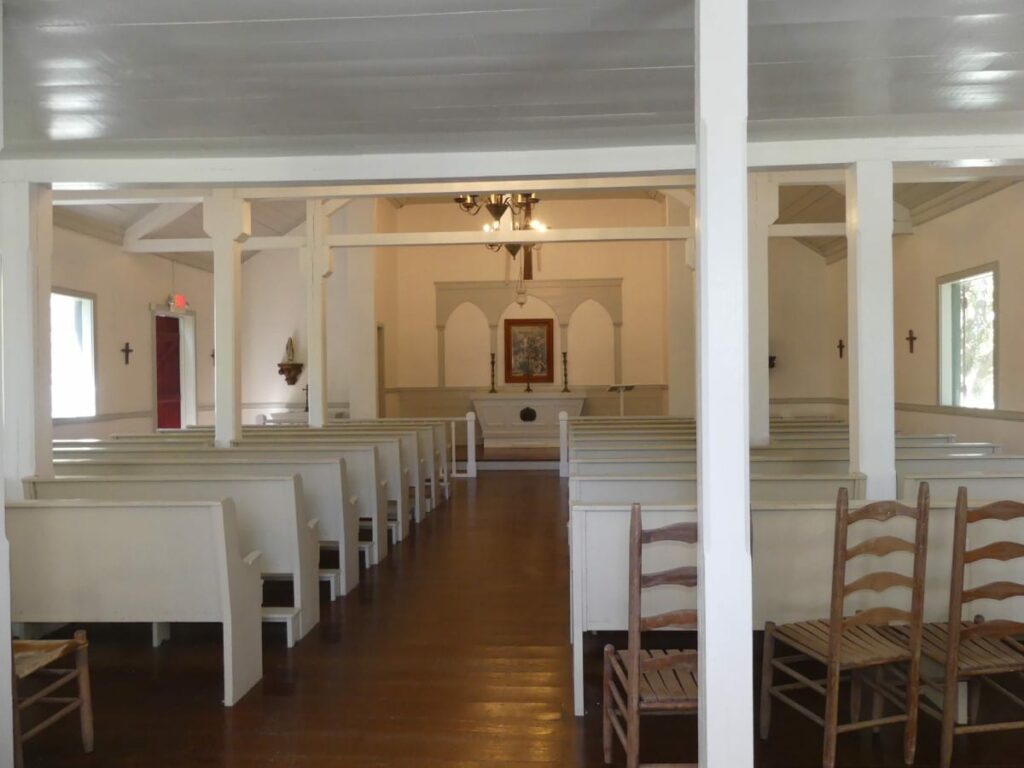
Insights into an 1890s Cajun Schoolhouse
At L’Ecole, a reproduction of an 1890s Cajun schoolhouse, our tour guide explained how, in the early 1900s, the government tried to wipe out Cajun culture. Children were forbidden to speak French. Adults were ridiculed if they spoke it. Thankfully, since the Civil Rights movement of the 1960s, Cajuns have taken pride in their culture. She told us about the evolution of many Cajun words so that the meaning often differs from the original French word. For example, Couyon (pronounced Coo yawn) is a slightly humorous way to call someone foolish in Cajun, but in France, it would be taken more as more insulting. If you called someone a catin in Cajun it means doll, but in France, it means prostitute.
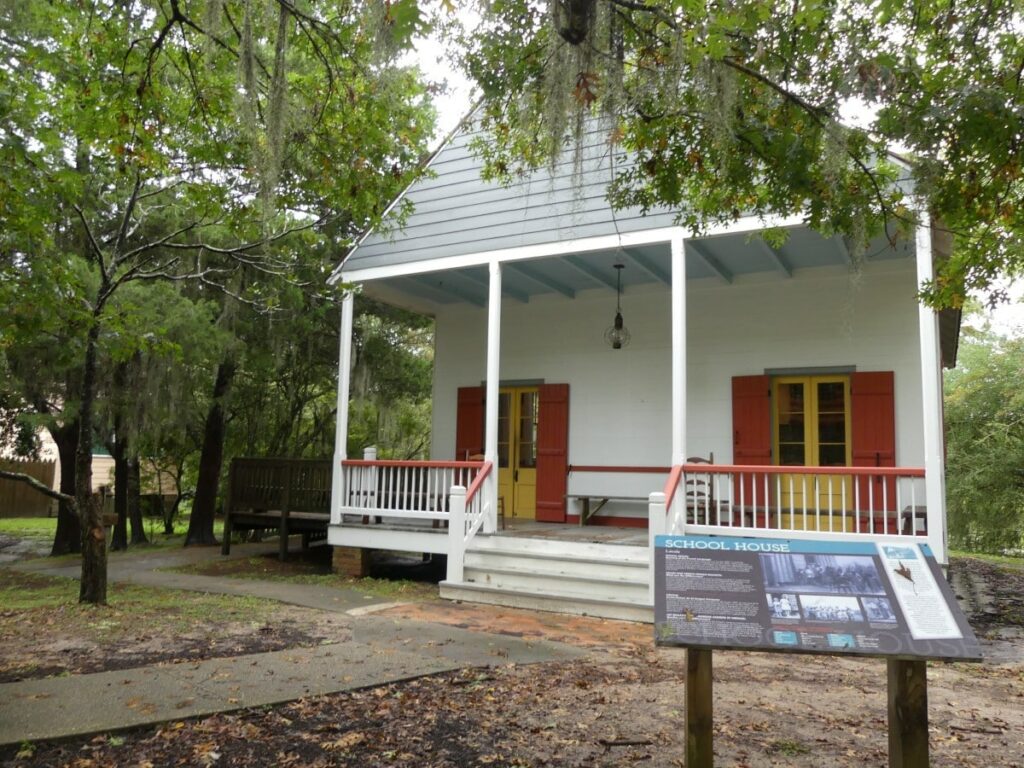
More Highlights of Vermilionville Historic Village
Other buildings showcasing the Cajun way of life include a blacksmith shop, boat builder’s shed, a barn, and Maison Acadienne, which showcases a traditional Acadian healer’s garden. Things didn’t run on electricity or gas in the 1700s, so there is an entertaining hand-pulled raft onsite to cross the alligator-inhabited Petit Bayou.
A Native American Common Ground sits behind the village. Of course, there are live animals that were common on every family’s farm. My favorite were the cute donkeys who trot over to the fence when they see humans and expect to be fed or petted.
Vermilionville’s restaurant, La Cuisine de Maman serves many traditional dishes. If you have gumbo here, don’t expect tomatoes. While Creole Gumbo in New Orleans usually has tomatoes, Cajun gumbo doesn’t. Behind the restaurant there is a performance center where local musicians jam.
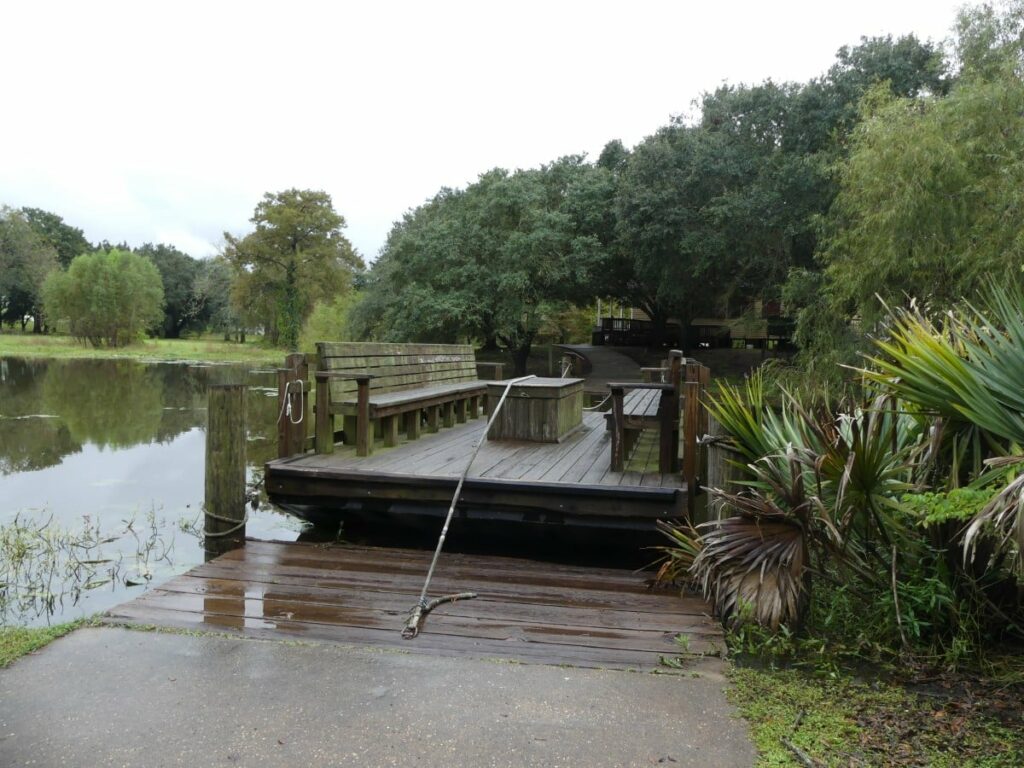
Note: You can take a self-guided tour or arrange ahead for a guided tour. Plan on spending two hours or more here. https://bayouvermiliondistrict.org/vermilionville/
Book Your Stay in Lafayette, Louisiana
Search, compare and book your accommodation at the best price by using the interactive map.

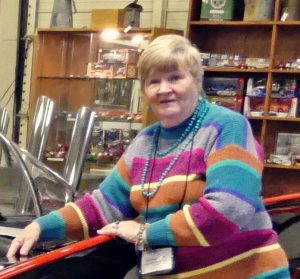
Kathleen Walls, former reporter for Union Sentinel in Blairsville, GA, is publisher/writer for American Roads and Global Highways. She is the author of several travel books including Georgia’s Ghostly Getaways, Finding Florida’s Phantoms, Hosts With Ghosts, and Wild About Florida series. Kathleen’s articles have appeared in Family Motor Coaching Association Magazine, Food Wine Travel Magazine, Weekender Extended, Travel World International, Tours4Mobile and others. She is a photographer with many of her original photographs appearing in her travel ezine, American Roads, as well as other publications. Her fiction includes Last Step, which was made into a feature movie of the same name by Forbes Productions, Kudzu, Under A Bloody Flag and Under A Black Flag.
PODCAST FEATURE
Listen to Kathleen’s interview talking about the American south.